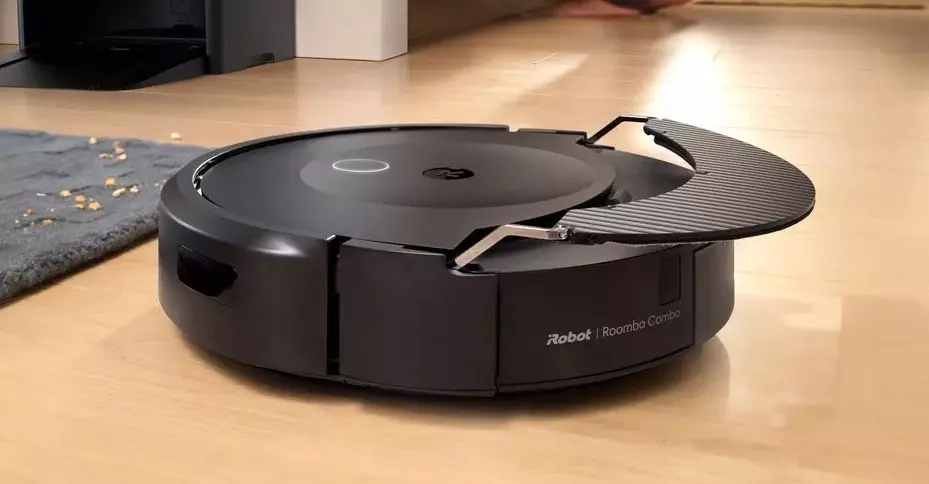The launch of Apple’s iOS 18.4 represents a significant leap forward in the smart home ecosystem, particularly for robot vacuum enthusiasts. Gone are the days of struggling with fragmented technology ecosystems; this update foreshores a promising horizon where devices speak the same language through the Matter protocol. This revolutionary integration underscores Apple’s commitment to a cohesive smart home environment, paving the way for an unparalleled user experience.
The Matter protocol is not just an incidental addition; it represents a paradigm shift. By enabling interoperability between devices from various brands, Matter aims to free users from the constraints of platform exclusivity. Sensor-driven innovations have created a teeming marketplace for smart devices, yet many users found themselves ensnared by compatibility issues. iOS 18.4 addresses this critical flaw by allowing devices such as those from Roborock, iRobot, and Ecovacs to be efficiently controlled through Apple’s Home app. The ease of being able to aggregate control under a single interface is a monumental step that exemplifies the essence of smart home technology.
Empowerment through Updates
The compatibility benefits afforded by iOS 18.4 are far-reaching. With this release, Roborock has taken strides to enhance its premium robot vacuum lineup through firmware updates that promote their models’ compatibility with Apple’s Home ecosystem. Notable products like the S8 MaxV Ultra and various Qrevo series are on the verge of receiving significant upgrades, adding robust control features and improved connectivity. Speculation about the usability of elevated Matter updates inspires confidence among tech aficionados, revealing a brighter and more integrated future for smart home management.
Ecovacs’ commitments further affirm this trend—as its lineup, including the Deebot X2 and T50 Max, undergoes phased Matter updates. These expanded capabilities will empower users to control their devices seamlessly, letting features like scheduling and location-specific operations become second nature. The apparent synergy between hardware manufacturers and software developers is not merely a stroke of luck; it is a calculated move toward enriching the consumer experience.
Intuitive Features and Limitations
However, while the Matter protocol shines a light on numerous advantages, it is essential to recognize its boundaries. The capabilities currently supported focus largely on basic features such as power control and operational mode switching. Advanced functionalities such as intricate mapping and specific zoning remain tethered to individual manufacturers’ applications. This limited support may pose a dilemma for tech-savvy users expecting comprehensive control via the Home app. While Apple seems to embrace simplicity, there is room for deeper functionality as the protocol matures.
This dynamic raises questions about the potential feedback loop between consumers and developers. As users adapt to the foundational features of Matter, companies might be prompted to expand their proprietary capabilities to retain user loyalty. Moreover, the ingenuity accompanying user needs could spark novel ideas that push the envelope of automation even further—delivering more granularity in controlling smart devices.
This scenario encapsulates a broader theme witnessed across the tech community: a call for evolution. The realm of smart home devices is still nascent, and as companies innovate, featuring compatibility with robust protocols like Matter, we’re likely to witness a flourishing of engaging technologies that cater to increasingly sophisticated consumer demands.
The Bigger Picture of Technological Symbiosis
The release of iOS 18.4 is emblematic of a transformation stirring within the landscape of smart technologies. It thrusts Apple into a leadership role in fostering collaboration among varied manufacturers, thus transforming the consumer journey towards a unified experience. Concurrently, the advancements from Roborock, iRobot, and Ecovacs symbolize not just the capabilities of individual brands but the potential for a harmonious ecosystem where user satisfaction rises through seamless integration.
As we observe this shift, it becomes evident that the user experience is at the heart of these technological advancements. With a commitment to addressing hurdles in compatibility and an earnest pursuit of intuitive control systems, we can hope that future iterations will continually refine and elevate our interactions with technology, making daily tasks not only manageable but extraordinary.


Leave a Reply